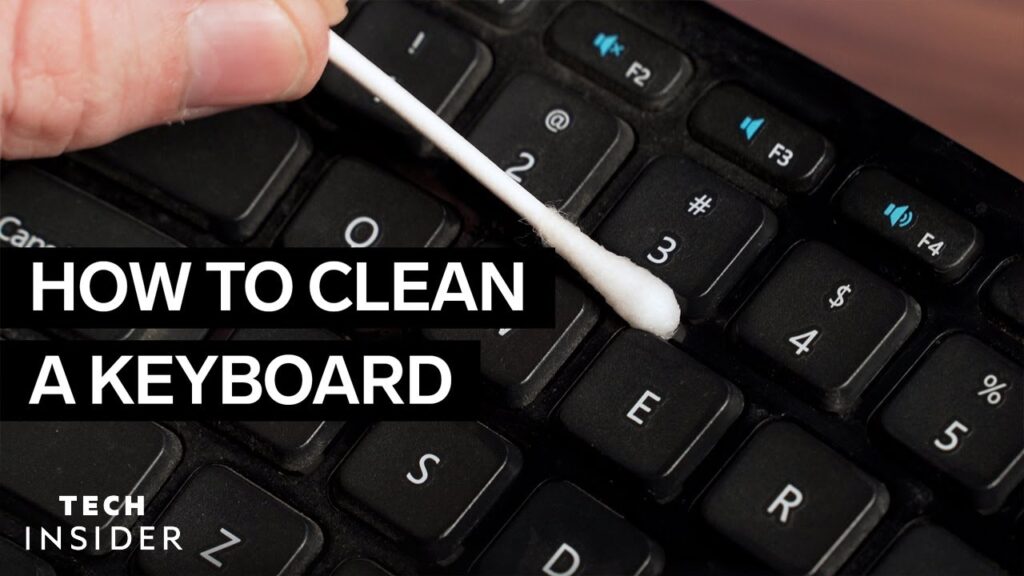Giriş
Kauçuk düğmeler, dayanıklılıkları ve rahatlıkları sayesinde ev aletlerinden elektronik cihazlara kadar birçok cihazda ortak bir özelliktir. Ancak, zamanla yapışkan bir doku geliştirerek kullanımlarını daha az keyifli ve basmalarını daha zor hale getirebilirler. Bu sorun genellikle kir, yağ ve kauçuk malzemenin doğal aşınma ve yıpranmasının bir kombinasyonundan kaynaklanır. Yapışkanlık yalnızca düğmenin işlevselliğini azaltmakla kalmaz, aynı zamanda genel kullanıcı deneyimini de etkileyebilir. Bu kılavuzda, yapışkan kauçuk düğmelerin nedenlerini inceleyecek, bunları temizlemek için etkili yöntemleri paylaşacak ve kauçuk düğmelerinizi en iyi durumda tutmanıza yardımcı olacak önleme ipuçları vereceğiz.
Kauçuk Butonlarda Yapışkanlık Nedenleri
Çözümlere geçmeden önce, nelerin neden olduğunu anlamak çok önemlidir kauçuk düğmeler yapışkan hale gelmesine neden olur. Temel nedeni belirlemek, en uygun temizleme yöntemini seçmenize yardımcı olacaktır.
A. Kir ve Döküntü Birikmesi
Zaman içinde kauçuk düğmeler toz, kir ve diğer küçük parçacıkları biriktirir. Bu maddeler cildinizdeki doğal yağlarla karışarak kauçuk yüzeyinde yapışkan bir kalıntı oluşturabilir. Bu durum özellikle uzaktan kumandalar, oyun konsolları veya mutfak aletleri gibi sık kullanılan cihazlarda yaygındır.
B. Yağlara ve Kimyasallara Maruz Kalma
Kauçuk yağlara, kimyasallara ve temas ettiği diğer maddelere karşı hassastır. Örneğin, parmaklarınızdan veya losyonlar, el dezenfektanları ve temizlik spreyleri gibi ürünlerden gelen yağlar zamanla kauçuk yüzeyini parçalayarak yapışkan hale gelmesine neden olabilir. Bu maruziyet, kauçuk düğmelerin pürüzsüz dokusunu kaybetmesinin başlıca nedenlerinden biridir.
C. Kauçuk Malzemenin Doğal Olarak Parçalanması
Kauçuk doğal bir malzemedir ve zamanla aşınma ve yıpranma nedeniyle doğal olarak parçalanacaktır. Kauçuk bozuldukça, özellikle ısıya, neme veya diğer çevresel faktörlere maruz kaldığında yapışkan hale gelmeye başlayabilir. Bu bozulma genellikle kademeli bir süreçtir, ancak kauçuk düğmelerinizin dokusunu ve işlevselliğini önemli ölçüde etkileyebilir.
Lastik Düğmelerden Yapışkanlığı Çıkarma Yöntemleri
Artık yapışkanlığın nedenlerini belirlediğimize göre, lastik düğmelerinizi temizlemek ve işlevselliğini geri kazandırmak için bazı etkili yöntemleri inceleyelim.
A. Nazik Temizlik için Sabun ve Su Kullanımı
Denemeniz gereken ilk yöntem basit bir sabun ve su çözeltisidir. Bu, malzemeye zarar vermeden kauçuk düğmeleri temizlemenin en nazik yoludur.
- Az miktarda yumuşak bulaşık sabununu ılık suyla karıştırın.
- Yumuşak bir bezi veya süngeri sabunlu suyla ıslatın.
- Lastik düğmeyi dairesel hareketlerle nazikçe silerek kir ve yapışkan kalıntıları temizleyin.
- Temiz su ile durulayın ve bir havlu ile iyice kurulayın.
Bu yöntem, kir ve döküntü birikiminden kaynaklanan küçük yapışkanlıklar için iyi sonuç verir.
B. Daha Zorlu Lekeler İçin Sürtme Alkolü veya Sirke Kullanımı
Yağların veya kimyasalların neden olduğu daha sert yapışkanlıklar için ispirto veya sirke oldukça etkili olabilir.
- Yumuşak bir bezi ispirto veya beyaz sirke ile nemlendirin.
- Görünür yapışkan kalıntıların olduğu bölgelere odaklanarak lastik düğmeyi bezle nazikçe fırçalayın.
- Temizledikten sonra alanı temiz, kuru bir bezle silin.
Hem ispirto hem de sirke, kauçuk malzemeye zarar vermeden yağların ve kimyasalların parçalanmasına yardımcı olur. Bu maddeleri boyalı veya hassas yüzeylerde kullanırken dikkatli olun.
C. Ovmak için Diş Fırçası veya Yumuşak Bez Kullanma
Sabun ve su veya alkol işe yaramazsa, yumuşak kıllı bir diş fırçası veya mikrofiber bir bez kullanmak, kauçuk düğmelerin oluklarında sıkışan daha derin kir veya kiri çıkarmaya yardımcı olabilir.
- Bir diş fırçasını ılık, sabunlu suya (veya daha zor vakalar için ispirtoya) batırın.
- Herhangi bir yarık veya pürüzlü bölgeye odaklanarak kauçuk düğmeyi nazikçe fırçalayın.
- Fırçaladıktan sonra alanı kuru bir bezle silerek temizleyin.
Diş fırçası, kirin saklanabileceği daha küçük alanlara ulaşabildiğinden, özellikle dokulu veya karmaşık yüzeylere sahip düğmeler için kullanışlıdır.
D. Sert Kimyasallardan veya Aşındırıcı Malzemelerden Kaçınma
Yapışkan kauçuk düğmeleri temizlemek için çamaşır suyu veya aşındırıcı ovma pedleri gibi sert kimyasallar kullanmak cazip gelse de, bu malzemeler kauçukta kalıcı hasara neden olabilir. Sert kimyasallar kauçuk malzemeyi parçalayabilir ve aşındırıcı pedler yüzeyi çizebilir veya rengini bozabilir. En iyi sonuçlar için nazik temizleme yöntemlerine sadık kalın.
Lastik Düğmeleri Temiz Tutmak İçin Önlem İpuçları
Önlemek her zaman tedavi etmekten daha iyidir. İşte lastik düğmelerinizi temiz ve yapışkanlıktan uzak tutmanıza yardımcı olacak bazı ipuçları:
A. Kauçuk Düğmelerin Düzenli Olarak Temizlenmesi ve Kurutulması
Yağ, kir ve kir birikimini önlemek için lastik düğmelerinizi düzenli olarak temizlemeniz önemlidir. Düğmelerinizi taze tutmak için birkaç haftada bir yumuşak, nemli bir bezle silin. Bu basit uygulama düğmelerinizin ömrünü uzatmaya ve pürüzsüz dokularını korumaya yardımcı olacaktır.
B. Yağlara ve Sert Kimyasallara Maruz Kalmaktan Kaçınma
Lastik düğmelerinizin neyle temas ettiğine dikkat edin. Yağlar yapışkanlığa katkıda bulunabileceğinden yağlı parmaklarla dokunmaktan kaçının. Ayrıca düğmeleri sert kimyasallara veya temizlik maddelerine maruz bırakmaktan kaçının, çünkü bunlar kauçuğun zamanla bozulmasına neden olabilir.
C. Kir ve Döküntü Birikimini Önlemek için Uygun Depolama
Kullanmadığınız zamanlarda, lastik düğmeli cihazları temiz ve kuru bir yerde saklayın. Kire ve döküntülere maruz kalmaları yapışkanlığa neden olabileceğinden tozlu veya kirli ortamlardan uzak tutun. Mümkünse, düğmeleri kir birikiminden korumak için kullanılmadıkları zamanlarda cihazların üzerini örtmeyi düşünün.
Kauçuk Düğmelerden Yapışkanlığın Temizlenmesi ile İlgili Sık Sorulan Sorular
A. Lastik Düğmelerimi Ne Sıklıkta Temizlemeliyim?
Kauçuk düğmelerinizi hangi sıklıkta temizlemeniz gerektiği, cihazın ne sıklıkta kullanıldığına ve içinde bulunduğu ortama bağlıdır. Yüksek kullanımlı cihazlar için düğmeleri ayda bir kez temizlemeyi düşünün. Daha az sıklıkta kullanılan ürünler için 2-3 ayda bir temizlik yeterli olabilir.
B. Lastik Düğmeleri Temizlemek için Çamaşır Suyu Kullanabilir miyim?
Çamaşır suyu etkili bir dezenfektan olsa da kauçuk düğmeler için çok serttir. Çamaşır suyu kullanmak kauçuk malzemeyi zayıflatabilir ve renk bozulmasına neden olabilir. Sabun ve su, ispirto veya sirke gibi daha hafif temizlik solüsyonlarını tercih edin.
C. Lastik Düğmelerimi Temizlemek İşlevselliklerini Etkiler mi?
Hayır, doğru temizleme yöntemlerini kullandığınız sürece kauçuk düğmelerinizi temizlemek işlevlerini etkilememelidir. Yüzeye zarar verebileceğinden sert kimyasallardan veya aşındırıcı malzemelerden kaçının. Düzenli temizlik düğmelerin sorunsuz çalışmasını ve harika görünmesini sağlayacaktır.
Sonuç
Yapışkan kauçuk düğmeler sinir bozucu bir sorun olabilir, ancak doğru temizleme teknikleri ve önleyici tedbirlerle işlevselliklerini kolayca geri kazandırabilir ve kullanım ömürlerini uzatabilirsiniz. Yapışkanlığın nedenlerini anlayarak ve nazik, etkili temizlik yöntemleri uygulayarak kauçuk düğmelerinizi en iyi durumda tutabilirsiniz. Düzenli bakım, yağlara ve sert kimyasallara maruz kalmaktan kaçınma ve uygun depolama, cihazlarınızın yıllarca kolay kullanılmasını ve en iyi şekilde görünmesini sağlayacaktır. Elinizdeki bu ipuçlarıyla, yapışkanlıkla başa çıkabilecek ve temiz kauçuk düğmelerin pürüzsüz, duyarlı hissinin tadını çıkarabileceksiniz.

